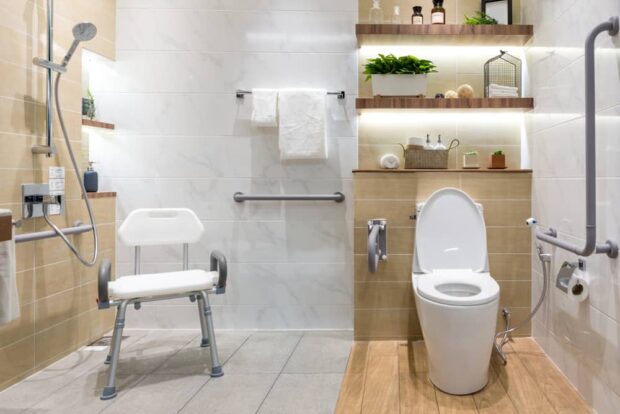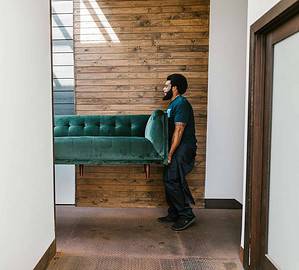For many older adults, as well as people with disabilities, bathrooms can be hazardous. Tile floors are slick, baths are hard to climb into, and hard surfaces can cause bruises, broken bones, and concussions. The bigger problem, though, is that most bathroom aids place function over form, meaning it can be a challenge to make accessible spaces attractive – and, as a result, many people resist using aids like grab rails and shower seats that could help keep them safe. Still, challenging is not the same as impossible, and today there are many examples of safe, accessible bathroom design that don’t compromise on style.

If you or a loved one need to make some modifications to your bathroom for safety reasons, don’t give up on making the space aesthetically pleasing. With these 4 swaps, you can add the access tools you need while keeping to the décor your love.
Ditch The Clutter
Before diving into more complex access issues, it’s important to address a common problem that’s also easy to solve: bathroom clutter. If your bathroom’s surfaces are crowded with clutter or the shelves are packed with multiple products, it’s time to get organized. Move items from high shelves or from inside the medicine chest and instead organize bathroom products into drawers that are easy to access. While you’re at it, don’t forget to remove freestanding items like toilet paper roll organizers and loose bath mats that could cause someone moving through the room to trip and fall.
Walk Right In …
One of the riskiest places in the bathroom for older adults is the bathtub or shower, and there are several reasons for this, the first of which is that it can be very difficult to climb over the side of the tub. One wrong move, and you’re on the floor or have crashed headlong into a tiled wall. Eliminate this risk by installing glass shower doors flush to the floor. These are also ideal if there’s anyone in your home who needs to be monitored for safety while bathing – there’s no need to worry about shower curtains getting in the way or water spilling all over the floor.
… And Have a Seat
Walking into the shower eliminated one serious risk, but it introduces another: falling on the wet shower floor. The usual solution to this, though, is to place a shower chair in the stall, but these plastic chairs look like the drug store access aids they are. They’re clunky, ugly, and don’t provide for a pleasant experience. Instead of a plastic shower chair, you can install a bench in your shower that matches the rest of the tiling. It will look like a luxury element, rather than an access tool – and functionally, it will be both. After all, who hasn’t wanted to sit down in the shower after a long day?
Style And Stability
If you’re looking for something to bridge the gap between standing independently and installing a shower seat, or you want to include several leverage points in your bathroom, you don’t have to start screwing in grab bars just yet. Though they are the most common option since they’re easy to install, when given the option, many people instead prefer to place floor-to-ceiling tension poles. Tension poles offer the same stability advantages, without compromising on aesthetics, adding a modern, industrial tone to the space.
Access and aesthetics are not mutually exclusive, and when we treat them as such, we’re doing everyone a disservice – but when we design spaces for inclusion without compromising style, we open up the world. This is as true when redesigning your home’s bathroom as it is for architects creating new public spaces, but private individuals have an edge. Specifically, homeowners have a chance to define what the next wave of safe, accessible spaces will look like. The more individuals commit to this work, the more likely it is that these changes will become standard in new accommodations, both public and private.



